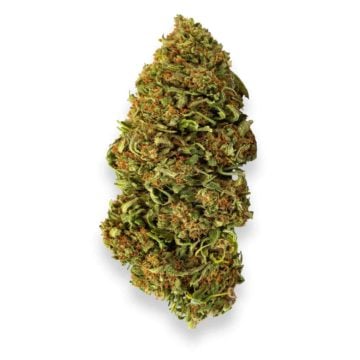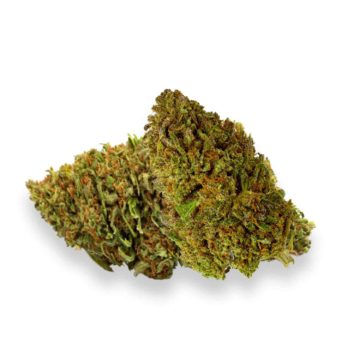
Is Medical-Only Weed Legal in South Dakota
- Understanding South Dakota’s Approach to Medical Marijuana
- Legal Framework for Medical Marijuana in South Dakota
- Qualifying Conditions for Medical Marijuana
- Registration Process for Medical Marijuana Patients
- Possession and Cultivation Limits
- Accessing Medical Marijuana Dispensaries
- Physician’s Role in Medical Marijuana Prescription
- Rights and Responsibilities of Medical Marijuana Patients
- Potential Benefits and Risks of Medical Marijuana
- Interaction with Federal Law and Challenges
- Future Outlook for Medical Marijuana in South Dakota
- Conclusion
In this article, we will embark on a comprehensive exploration of the legal landscape surrounding medical-only weed in South Dakota. By delving into the intricate web of the state’s laws, regulations, and conditions related to medical marijuana, we aim to provide a thorough understanding of the subject. As the cannabis conversation evolves, particularly in states like South Dakota, it becomes imperative to comprehend the nuances of medical cannabis within the framework of its legal status and societal impact.
This post is intended as information and for general knowledge only. It is not a substitute for medical advice, diagnosis, or treatment. It is recommended that you talk to a healthcare professional about this before introducing cannabinoids into your daily routine (especially if you have been diagnosed with any medical conditions or are under any medication). It is not recommended to drive or operate any machinery when using cannabis- or hemp-derived products. Use responsibly!
Understanding South Dakota’s Approach to Medical Marijuana
South Dakota, historically known for its conservative leanings, has shaped its cannabis policies in accordance with this ideology. The state’s stance on marijuana, including medical cannabis, has been greatly influenced by its past, which has often favored more stringent regulations. This conservative history has played a role in shaping the trajectory of cannabis laws in the region, culminating in a cautious approach toward medical marijuana.
Public perception, however, is shifting. As the medical marijuana movement gains momentum across the United States, even traditionally conservative states like South Dakota are reevaluating their stance. South Dakotans are increasingly engaging in discussions about the potential benefits of medical cannabis, contributing to a more nuanced understanding of the subject.
The contrast between medical-only and recreational legalization states is palpable. While some states have opted for a comprehensive approach, legalizing both medical and recreational marijuana, South Dakota has taken the medical-only route. This decision reflects the state’s careful consideration of the potential benefits and risks associated with cannabis use and distribution.
Legal Framework for Medical Marijuana in South Dakota
In South Dakota, the journey toward medical cannabis legalization was a result of the citizens’ voice. Initiated Measure 26, passed by South Dakota voters, ushered in the era of medical marijuana. The measure, also known as Amendment A, established the legal foundation for a regulated medical cannabis program in the state. This marked a significant departure from the conservative norms that had governed South Dakota for years.
The distinction between medical and recreational cannabis laws is vital. While medical marijuana is legal and regulated, recreational marijuana remains prohibited. This separation underscores the state’s commitment to carefully controlling cannabis access, ensuring that it is accessible only to those with valid medical conditions.
Qualifying Conditions for Medical Marijuana

South Dakota’s medical cannabis program outlines a range of qualifying medical conditions that allow individuals to access medical marijuana. These conditions encompass ailments such as chronic pain, epilepsy, multiple sclerosis, and more. The process of adding new conditions to this list involves thorough evaluation and consideration by medical experts and policymakers, ensuring that patients with varying medical needs can benefit from medical marijuana.
Medical practitioners play a pivotal role in determining eligibility for medical cannabis. A qualified physician’s recommendation is often a prerequisite for patients seeking access to medical marijuana. This ensures that medical judgment and expertise guide the prescription process, aligning with the program’s commitment to safe and responsible use.
Registration Process for Medical Marijuana Patients
For South Dakotans seeking to become medical marijuana patients, a structured registration process is in place. This process entails gathering and submitting necessary documentation, including medical records and identification, to demonstrate the patient’s eligibility. The program strives to strike a balance between accessibility and accountability, with an emphasis on timely approval and issuance of medical marijuana cards.
Possession and Cultivation Limits
To maintain a controlled and regulated environment, South Dakota has established clear possession limits for medical marijuana patients. These limits are designed to prevent abuse and diversion while ensuring that patients have access to an adequate supply of cannabis. In addition to possession limits, regulations surrounding THC content and product types contribute to the overall safety of medical cannabis use.
Home cultivation regulations, if applicable, also come into play. Some states allow medical marijuana patients to cultivate their own cannabis plants, while others require patients to rely solely on licensed dispensaries. Understanding these limits is crucial for patients to remain compliant with the law.
Accessing Medical Marijuana Dispensaries
The number and distribution of medical marijuana dispensaries within South Dakota play a pivotal role in patients’ access to medical cannabis products. However, challenges in accessing dispensaries, especially in rural areas, highlight potential disparities in cannabis access. While urban regions might enjoy convenient access to dispensaries, rural patients might face longer journeys to obtain their prescribed medication.
Dispensaries, operating within the confines of the law, provide patients with a range of cannabis products tailored to their medical needs. These establishments adhere to stringent regulations to ensure that medical marijuana reaches patients safely and responsibly.
Physician’s Role in Medical Marijuana Prescription
The role of medical professionals in the medical marijuana process is critical. Physicians, possessing the necessary qualifications and expertise, evaluate patients’ medical conditions to determine whether medical cannabis is a suitable treatment option. The consultation process between patients and physicians is comprehensive, involving a thorough assessment of medical history, current condition, and potential benefits of medical marijuana use.
Medical judgment guides the prescription process, with physicians considering ethical considerations alongside medical efficacy. This ensures that patients receivethe most appropriate treatment for their medical conditions.
Rights and Responsibilities of Medical Marijuana Patients
Registered medical marijuana patients in South Dakota are granted specific legal rights that safeguard their access to treatment. These rights encompass the ability to purchase and possess medical cannabis products, along with protections against discrimination in housing and employment based on their medical marijuana use.
However, patients also carry responsibilities. Adhering to recommended dosage guidelines, using cannabis responsibly, and abiding by state regulations contribute to the safe and effective use of medical marijuana.
Potential Benefits and Risks of Medical Marijuana
The medical conditions that can be treated with medical marijuana are diverse and encompass a wide range of ailments. Patients suffering from chronic pain, nausea, muscle spasms, and more may find relief through medical cannabis. Its potential benefits include improved pain management, reduced symptoms, and enhanced quality of life for many.
Balanced against these benefits are potential risks and side effects. Like any medication, medical marijuana carries the possibility of adverse reactions, interactions with other medications, and the risk of dependence or misuse. Patients and medical practitioners must weigh these factors when considering medical cannabis treatment.
Interaction with Federal Law and Challenges
The intersection of state legalization and federal classification of marijuana creates a complex legal landscape. While medical marijuana is legal in South Dakota under state law, it remains classified as a Schedule I controlled substance at the federal level. This dichotomy presents challenges for patients, medical cannabis establishments, and law enforcement agencies, as they navigate conflicting jurisdictions.
The potential for federal policy changes further complicates the situation. As the national conversation about marijuana legalization continues to evolve, potential shifts in federal policy could impact South Dakota’s medical cannabis program. Staying informed about these developments is essential for all stakeholders involved.
Future Outlook for Medical Marijuana in South Dakota
The road ahead for medical marijuana in South Dakota is a dynamic one. With ongoing advocacy efforts and potential ballot initiatives, the program could experience expansion or further restrictions. Evolving public sentiment, coupled with growing evidence of medical cannabis efficacy, could lead to more comprehensive medical marijuana laws.
As South Dakota’s medical cannabis landscape continues to evolve, stakeholders must remain vigilant about changes in regulations, policies, and attitudes. Staying informed will be key to navigating the complex terrain of medical-only weed in South Dakota.
Conclusion
Our journey through South Dakota’s approach to medical-only weed has illuminated the intersection of law, medicine, and society. South Dakota’s decision to legalize medical marijuana while maintaining a conservative approach to recreational use showcases the state’s careful consideration of the subject. As South Dakota’s medical cannabis program matures, patients, physicians, and policymakers must collaborate to ensure that the benefits of medical marijuana are maximized while potential risks are minimized. By fostering a deep understanding of the legal framework and its implications, all stakeholders can contribute to the responsible and effective implementation of medical-only weed in South Dakota.

















